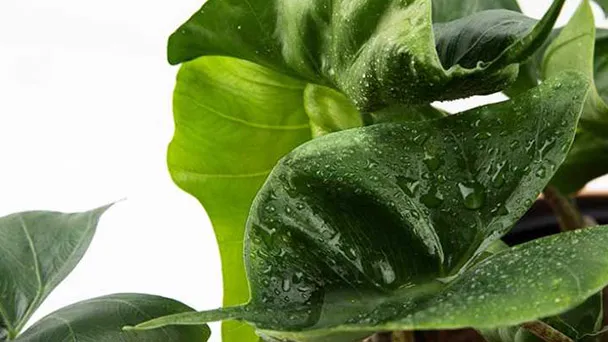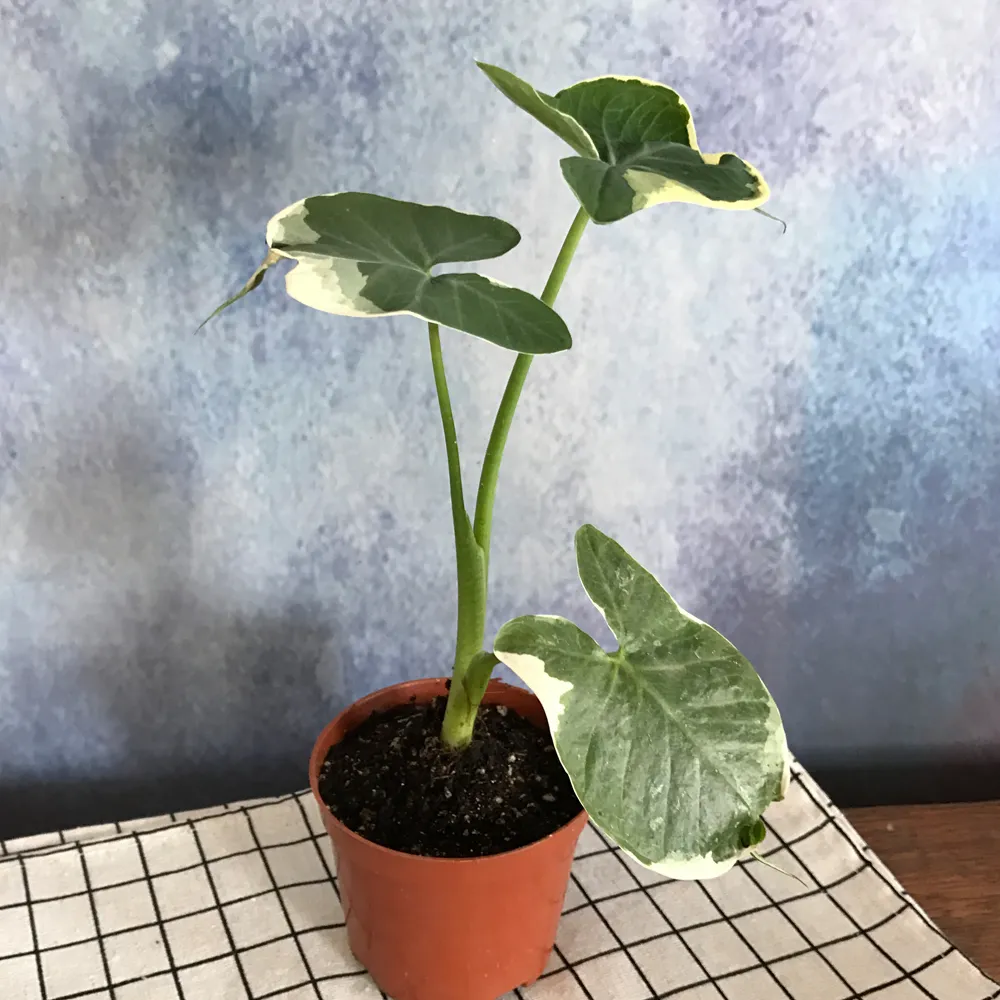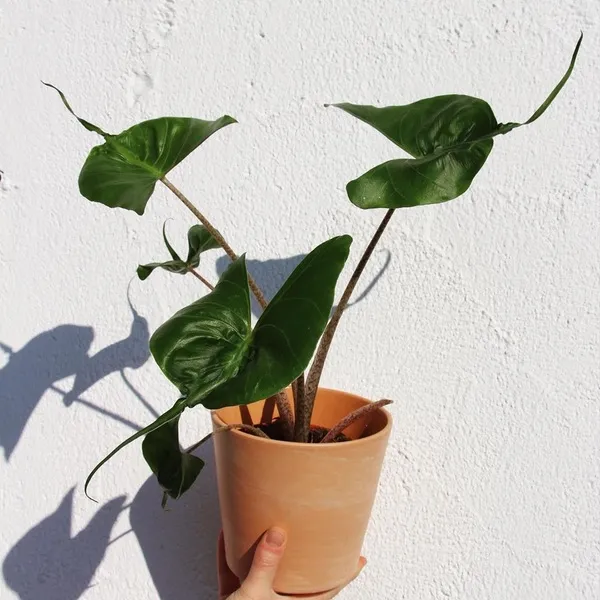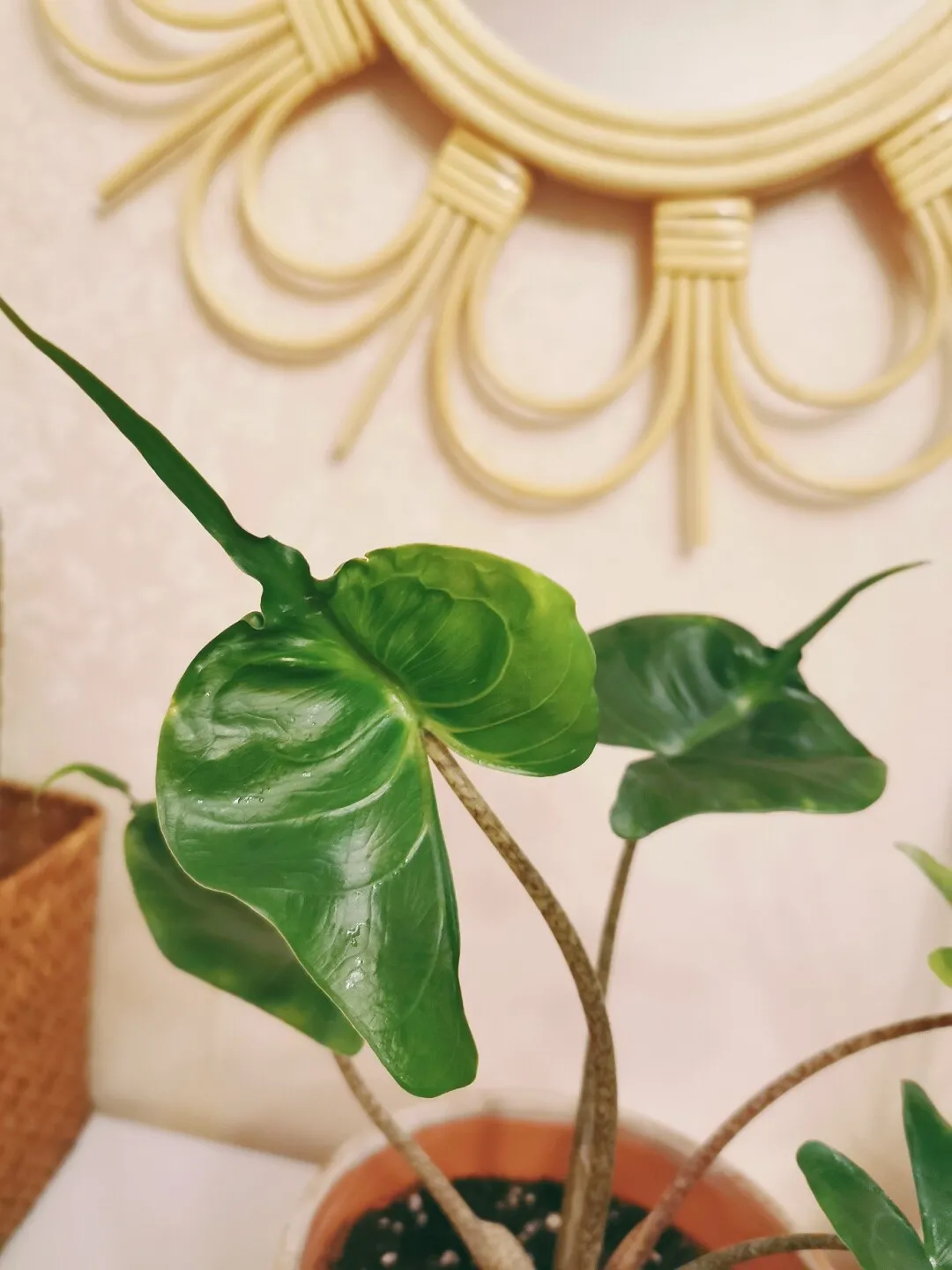Alocasia Stingray Grow And Care Guide
Written by Ivy
Dec 07 2021

Alocasia Stingray is a famous hot asian maranta variety. The base of the leaf tip is narrow, but the leaf tip is very long, and the posterior lobe is wide. As a result, the whole leaf of Alocasia stingray is very similar to the Stingray in the sea, so it is named. Alocasia stingray is a large variety of sea taro, which can be more than 100cm high. Its petiole has brown patterns, can accept strong light, is prone to lateral buds, and often grows into a large group.



Prevention and treatment methods: we should properly ventilate and control the amount of potted flowers to avoid excessive humidity, which can prevent the occurrence of the disease. In the early stage of disease, 1000 times of streptomycin can be used to smear the infected part of the plant.
Prevention and treatment: when the Alocasia stingray disease occurs, we can manually scrape, cut off the insect leaves and burn them. In case of large area, spray with 1000 times of 4U% Omethoate emulsion.
Alocasia Stingray Quick InfoAlocasia Stingray Care in DetailAlocasia Stingray WateringAlocasia Stingray SoilAlocasia Stingray LightAlocasia Stingray TemperatureAlocasia Stingray HumidityAlocasia Stingray FertilizerAlocasia Stingray PruningAlocasia Stingray RepottingAlocasia Stingray Pest & Disease ControlAlocasia Stingray PropagationAlocasia Stingray Propagation from CuttingAlocasia Stingray Propagation from DivisionAlocasia Stingray Propagation from Seed
Alocasia Stingray Quick Info
| Botanical/Scientific Name | Alocasia Stingray |
| Common Name | Elephant Ear |
| When to Grow/Bloom/Harvest | Plant in the warmer months of spring and summer |
| Uses | Indoor houseplant |
| Origin | South East Asian |
| Light Care | Bright but indirect light |
| Soil Care | Well-drains |
| Temperature Care | 18ºC (64.4ºF) to 22ºC (71.6ºF) |
| Humidity Care | Moist |
| Watering | Water regularly but not too much. |
| Pruning Care | Remove yellowed or dying leaves |
| Fertilizer Care | Diluted balanced fertilizer |
| Propagation | Rhizome division, and offsets |
| Toxic | Insoluble oxalate crystals |
Alocasia Stingray Care in Detail

Alocasia Stingray Watering
Alocasia stingray grows very fast in spring and autumn. In these two seasons, we need to ensure that Alocasia stingray has enough nutrients to supplement its growth, because Alocasia stingray consumes a lot in the process of its growth. Once the consumption is large, it needs more nutrients. At this stage, we need to water it once every seven days, It is necessary to ensure the soil moisture every time, but the amount of watering should not be too much, which will easily lead to the decay of plant roots. As long as the water in the soil is lost or the soil becomes dry, we need to water and supplement Alocasia stingray, so as to prevent the plant from stopping growing due to lack of water and dry branches and leaves.Alocasia Stingray Soil
Alocasia stingray likes slightly acidic and fertile soil. During cultivation, we can match nutrient soil, mainly rotten leaf soil or sandy soil, and then mix a small amount of river sand to improve the drainage capacity. We can also buy nutritious soil. The flower nutritious soil sold on the market can be used directly. In addition, attention should also be paid to the methods during planting, to ensure that the roots of Alocasia stingray are extended, and water should be poured in time after filling and compaction. Don't bask in the sun first, and then manage normally after recovery.Alocasia Stingray Light
Alocasia stingray is a shade tolerant plant type. Especially in the high temperature weather in summer and autumn, we need to shade it to prevent the plant from being irradiated by strong light and causing Alocasia stingray to dry. The growth and development of taro is inseparable from an appropriate amount of water and fertilizer, but it should not be exposed to too much sunlight. If it is exposed to too much sunlight, it will inhibit it. Too much photosynthesis will lead to the reduction of chlorophyll in Alocasia stingray leaves, which will die the original function of the plant and lose its ornamental value.Alocasia Stingray Temperature
The growth of Alocasia stingray is inseparable from the appropriate temperature. At the appropriate temperature, Alocasia stingray can develop more perfectly. If it grows at the inappropriate temperature, it will play the opposite role and lead to the death of the plant. The most suitable temperature for the growth of Alocasia stingray is more than 19 degrees, but not more than 35 degrees. Too high temperature will hinder the growth of Alocasia stingray. Within this temperature range, the sea taro will grow well. Once winter comes and the temperature drops below seven degrees, we should take measures to keep warm, so as to avoid low temperature and frostbite of plant roots and stems, thus losing the quality of Alocasia stingray.
Alocasia Stingray Humidity
Alocasia stingray is particularly wet. In the growing season, not only the basin soil is required to be wet, but also the air humidity is required to be no less than 60%. When it is hot in summer, we should strengthen water spraying to create a relatively cool and humid environment. For those placed in the indoor hall, we should not only ensure that the basin soil is wet, but also spray water on the leaf surface of Alocasia stingray from time to time.Alocasia Stingray Fertilizer
When Alocasia stingray grows rapidly, we also need to apply fertilizer to it. Generally, the fertilization times are maintained once every ten days. However, during fertilization, do not touch the fertilizer to the root of Alocasia stingray to avoid burning the root by the fertilizer. Pay attention to the comprehensive use of nitrogen, phosphorus and potassium fertilizer to make the growth of the plant more balanced.Alocasia Stingray Pruning
When trimming Alocasia stingray, we should first observe carefully. If there are yellow leaves on the plant, the whole yellow leaves and petioles should be trimmed off, and the healthy leaves should be retained. A whole Alocasia stingray has only a handful of leaves. Therefore, we only need to cut off the yellowing leaves and let the healthy leaves concentrate nutrients.
Alocasia Stingray Repotting
During Alocasia stingray repotting, we can take Alocasia stingray out of the flower pot and pick up the soil attached to the root system by hand. If you find dry and rotten fibrous roots, trim them in time. Put it in a cool and ventilated place to dry its roots. After the cut on the roots is air dried, it is re buried in a new basin soil. After the basin change of Alocasia stingray is successful, we can compact the soil by hand, pour water and place it in the astigmatic and ventilated place, and gradually increase the light intensity after a week. At ordinary times, I weigh the weight of the basin soil by hand and feel that it is obviously lighter and permeable.Alocasia Stingray Pest & Disease Control
- Soft rot
Prevention and treatment methods: we should properly ventilate and control the amount of potted flowers to avoid excessive humidity, which can prevent the occurrence of the disease. In the early stage of disease, 1000 times of streptomycin can be used to smear the infected part of the plant.
- Scale
Prevention and treatment: when the Alocasia stingray disease occurs, we can manually scrape, cut off the insect leaves and burn them. In case of large area, spray with 1000 times of 4U% Omethoate emulsion.
Alocasia Stingray Propagation

Alocasia Stingray Propagation from Cutting
Alocasia stingray has a strong growth under proper maintenance, so everyone has a better choice of cutting propagation method. You can choose the cutting rod. The length is not very long. It can be about 12cm. The plants cut obliquely by Alocasia stingray are also more convenient to spread. However, the sand layer is good at growing Alocasia Stingray at a temperature of 18 degrees. Finally, Alocasia stingray is sprayed with rock cuttings in time, Spraying once the next day, try to keep the soil slightly wet, and the growth and survival of plants can also be guaranteed.Alocasia Stingray Propagation from Division
Alocasia stingray propagation from division is very common. The method of selecting plant growth points is basically divided into two to three years. After the plant is separated with a knife, it is possible to have effective protective measures with the original soil, such as Alocasia stingray's growth and survival ability. When the division is selected, the soil is wet in the rainy season - generally, the point plant is in the spring and autumn, the temperature conditions are comfortable, and the division seems to be relatively strong.Alocasia Stingray Propagation from Seed
Although the survival rate of Alocasia stingray propagation from seed is relatively high, the plant growth is relatively busy. Compared with other methods, everyone should choose the other two methods when propagating alocasia stingray, but pay no attention to the time factor. The sowing method is very good. When sowing in spring, the soil maintains appropriate moisture to prevent the cold in spring. We can cover plastic film. About four real leaves can be transplanted, which can ensure the survival of plants and is also suitable for Alocasia stingray reproduction. Survival is a very important factor.Latest Updated
- Benefits of Bugleweed - 7 Science-backed Health Benefits
- Bugleweed Dangers & Side Effects - Is It Poisonous?
- How to Plant Evergreen Trees - What You Should Know
- When to Plant Evergreens - Grow Guide for Evergreen Trees
- 12 Wonderful Evergreen Shrubs for Your Garden
- 12 Popular Evergreen Plants with Pictures for Beginners
- When And How To Prune A Lilac Bush Like a Pro
- How to Grow & Care for Lilac Vine (Hardenbergia Violacea)
- Japanese Lilac Tree (Syringa Reticulata) Care & Propagation Guide
- Shumard Oak Pros and Cons - What to Know
Popular Articles
- Winter maintenance of Antirrhinum Majus
- How to Grow Terminalia Mantaly Tree
- How to Grow and Care for Crossostephium Chinense
- How to grow Antirrhinum Majus in spring
- Peristeria Elata (Dove Orchid) Profile: Info & Care Guide
- Underwatered Snake Plant (Sansevieria Trifasciata) - Signs And How To Fix
- How to Care for Brazilian Jasmine Plant (Mandevilla Sanderi)
- How to Grow & Care for Graptopetalum Purple Delight in Summer
- Rosa Chinensis (China Rose): Plant Growing & Care Tips
- How to Care for Baby Sun Rose (Aptenia Cordifolia)